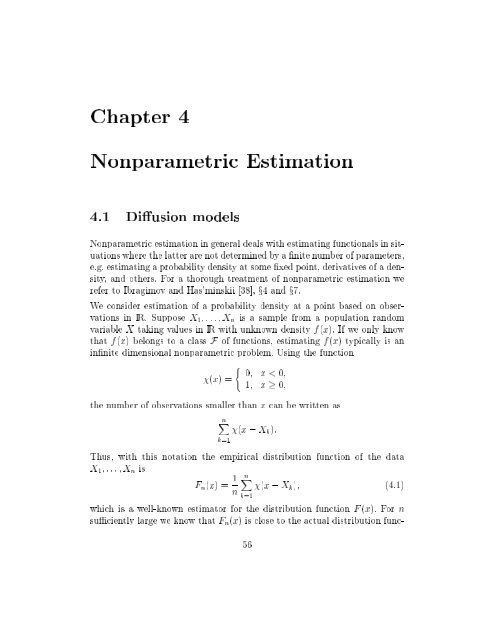Estimation in Financial Models - RiskLab
Estimation in Financial Models - RiskLab
Estimation in Financial Models - RiskLab
You also want an ePaper? Increase the reach of your titles
YUMPU automatically turns print PDFs into web optimized ePapers that Google loves.
Chapter 4<br />
Nonparametric <strong>Estimation</strong><br />
4.1 Diusion models<br />
Nonparametric estimation <strong>in</strong> general deals with estimat<strong>in</strong>g functionals <strong>in</strong> situations<br />
where the latter are not determ<strong>in</strong>ed by a nite number of parameters,<br />
e.g. estimat<strong>in</strong>g a probability density at some xed po<strong>in</strong>t, derivatives of a density,<br />
and others. For a thorough treatment of nonparametric estimation we<br />
refer to Ibragimov and Has'm<strong>in</strong>skii [38], x4 and x7.<br />
We consider estimation of a probability density at a po<strong>in</strong>t based on observations<br />
<strong>in</strong> IR. Suppose X 1 ;:::;X n is a sample from a population random<br />
variable X tak<strong>in</strong>g values <strong>in</strong> IR with unknown density f(x). If we only know<br />
that f(x) belongs to a class F of functions, estimat<strong>in</strong>g f(x) typically is an<br />
<strong>in</strong>nite dimensional nonparametric problem. Us<strong>in</strong>g the function<br />
(<br />
0; x
















